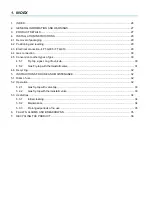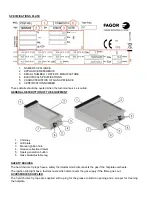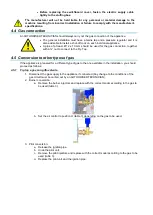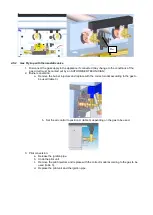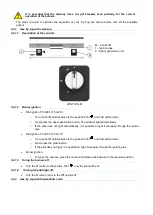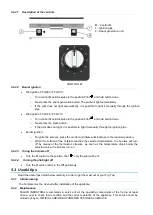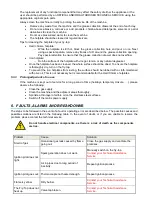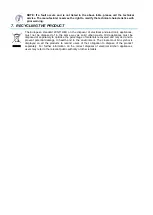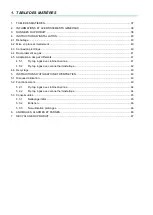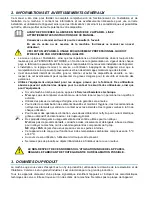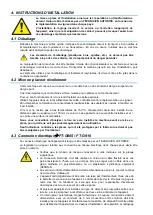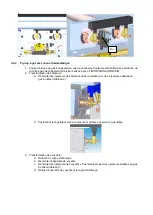
4.
INSTALLATION INSTRUCTIONS
The positioning and installation, and all repairs or modifications, should always
be carried out by an AUTHORISED TECHNICIAN, in accordance with the
applicable legislation of the country.
The installation, incorrect adjustment, inappropriate maintenance or use of the
appliance may cause material damages and injuries.
4.1
Removal of packaging
Remove packaging from the machine and check for damage during transportation. If any damage is
observed, immediately notify the supplier and the transport company. In the event of doubt, do not use
the machine until the problem has been assessed.
Packaging (plastic, wood, staples, etc.) must not be left in the reach of children, it is
a potential hazard.
The machine should be moved using a fork-lift truck or similar to avoid damage to the structure.
Transport the machine to the installation location and then remove packaging.
All the packaging can be recycled. Dispose of packaging correctly.
4.2
Positioning and levelling
This machine is designed to be placed on top of a low unit or hanging- or bridge-type structure.
For optimum operation, it is essential that the machine is correctly levelled.
It is advisable to install an extraction hood for the optimum operation of the appliance.
Place the appliance in a sufficiently ventilated room, in accordance with the current regulations, to
prevent the formation of unacceptable concentrations of harmful substances in the installation site.
If the wall is not able to withstand temperatures of 150 ºC, the appliance should be installed at a
distance of at least 100 mm. Appliances must only be installed on and/or against fireproof surfaces.
Inspect final location of the machine prior to installation to prevent damage during use.
Unless otherwise indicated, the parts that have been protected by the manufacturer must
not be manipulated by the installer.
4.3
Electrical connection
→
FT-G905 / FT-G910
An AUTHORISED TECHNICIAN should always carry out the appliance’s electrical connection.
The legal standards in force in each country regarding connection to the mains should be taken into
account.
•
Check that the mains voltage corresponds to that indicated on the nameplate.
•
The electric cable should be flexible, with an oil-proof covering, and it should not
weigh less than the cable in an ordinary sleeve made of standard polychloroprene
or an equivalent synthetic elastomer (H05RN-F).
•
The cross-section of the power cable must be suitable for the rated current of the
machine. (Table 2)
•
The appliance must be connected to earth using the connection on the appliance
connection terminal board. The earth cable should be longer than the other wires.
The manufacturer will not be held liable for damage originated by failure to observe
this requirement.
•
When several appliances are installed in series, they should be earthed to each
other using the point assigned for this purpose, located at the rear of the appliance.
•
An easily accessible omnipolar magneto-thermal circuit breaker of suitable
capacity should be installed next to the appliance, with a minimum gap of 3 mm
between contacts. This switch should be used to disconnect the appliance during
installation, repair, cleaning and maintenance work. It should have locking/labelling
capacities. The manufacturer will not be held liable for damage originated by failure
to observe this requirement.
•
An easily accessible differential protection device of suitable capacity should be
installed next to the appliance. The manufacturer will not be held liable for damage
originated by failure to observe this requirement.
•
If any faults are observed during the installation, the supplier should be notified
immediately.
Summary of Contents for Kore 700 Series
Page 92: ...92 ...












